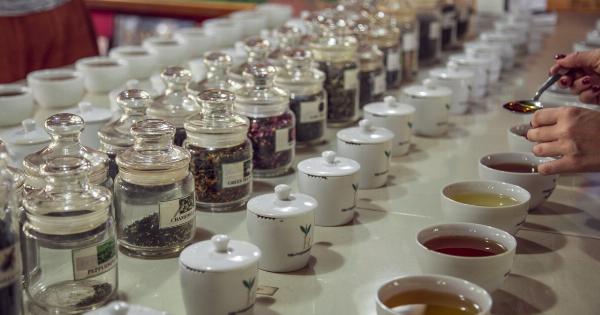Our sense of smell plays a crucial role in our daily lives. It helps us detect pleasant and unpleasant odors, influences our food choices, and even triggers memories.
But have you ever wondered how our nose tolerates different smells? Is there a way to quantify the impact of various scents on our olfactory system? In this article, we delve into the fascinating world of quantifying smells and explore the science behind it.
The Olfactory System
Before we dive into quantification, let’s understand the basics of the olfactory system. Our sense of smell starts with the detection of odor molecules by specialized receptors in the nose.
These receptors send signals to the brain, which then interprets the detected odor and elicits a response.
Quantifying Smells
Quantifying smells is a challenging task as everyone’s perception of odor can vary. What might be an enjoyable fragrance for one person could be unbearable to another.
However, scientists have devised various methods to measure and classify smells objectively.
Olfactometry
Olfactometry is a technique used to measure odor concentration and determine the threshold at which a smell becomes detectable. This method involves a panel of trained individuals who sniff and rate the intensity of different smells.
By averaging the ratings of the panel members, scientists can quantify the strength of a particular odor.
Electronic Nose
Advancements in technology have led to the development of electronic noses, which aim to mimic the human olfactory system.
These devices contain sensors that detect odor molecules and create a fingerprint-like pattern based on their chemical composition. By comparing these patterns with a database of known smells, electronic noses can identify and quantify different odorous compounds.
Gas Chromatography-Olfactometry
Gas Chromatography-Olfactometry (GC-O) is a powerful technique that combines gas chromatography with olfactometry. It involves separating odorous compounds using gas chromatography and analyzing them with human evaluators using olfactometers.
This enables a detailed analysis of the chemical composition of smells and their sensory impact.
Hedonic Tone
Hedonic tone refers to the pleasantness or unpleasantness of an odor. Research has shown that the hedonic tone of a smell can influence how our nose tolerates it.
For example, pleasant odors tend to have a higher tolerance threshold, while unpleasant odors can be detected at lower concentrations.
Factors Affecting Smell Tolerance
Several factors can influence our tolerance to different smells:.
1. Sensory Adaptation
Repeated exposure to a smell can lead to sensory adaptation, where our receptors become less responsive to that particular odor. This adaptation enhances our tolerance to the smell over time.
2. Individual Variation
Each person has a unique sensory perception, which means that tolerance levels can vary considerably. Genetic factors, previous experiences, and cultural influences can contribute to these individual differences.
3. Emotional and Cognitive Factors
Emotions and cognitive processes can also influence our tolerance to smells. For instance, a person in a positive mood may exhibit higher tolerance levels, whereas stress or negative emotions can decrease tolerance.
4. Environmental Factors
The environment we are exposed to can impact our smell tolerance. Factors such as temperature, humidity, and pollution levels can affect how we perceive and tolerate different odors.
Applications and Future Research
The quantification of smells has numerous applications across various industries:.
1. Perfume and Fragrance Industry
Understanding the quantitative aspects of smells enables perfume manufacturers to create fragrances that are pleasing and long-lasting.
By measuring odor concentrations and analyzing consumer preferences, they can develop scents that appeal to a wide range of individuals.
2. Environmental Monitoring
The ability to quantify smells is crucial in environmental monitoring and assessing air quality.
By measuring the concentration of odor-causing compounds, scientists can identify and mitigate sources of pollution, ensuring a healthier living environment.
3. Food and Beverage Industry
Quantifying smells helps in quality control and flavor development within the food and beverage industry.
By analyzing the aroma compounds present in different ingredients and products, manufacturers can enhance the sensory experience and improve consumer satisfaction.
4. Health and Medicine
Quantification of smells can also have implications in the field of healthcare. Researchers are exploring the possibility of using odor tests to detect certain diseases or monitor the progression of a condition.
For example, studies have shown that certain odors may be indicative of neurological disorders like Parkinson’s disease.
The Future of Smell Quantification
As technology continues to advance, the field of smell quantification holds tremendous potential.
Researchers are exploring innovative techniques, such as biosensors and machine learning algorithms, to develop more accurate and efficient ways of measuring and classifying smells. The integration of artificial intelligence and big data analysis may revolutionize our understanding of olfactory perception.
Conclusion
The ability to quantify smells is a fascinating field that bridges the gap between science and our sensory experiences.
Through techniques like olfactometry, electronic noses, and gas chromatography-olfactometry, scientists can objectively measure and analyze smells. The factors influencing our smell tolerance are diverse and include sensory adaptation, individual variation, emotional and cognitive factors, and environmental influences.
The applications of smell quantification range from perfume development to environmental monitoring and healthcare. With ongoing research and technological advancements, the future of smell quantification holds great promise in unraveling the mysteries of our olfactory system.





























